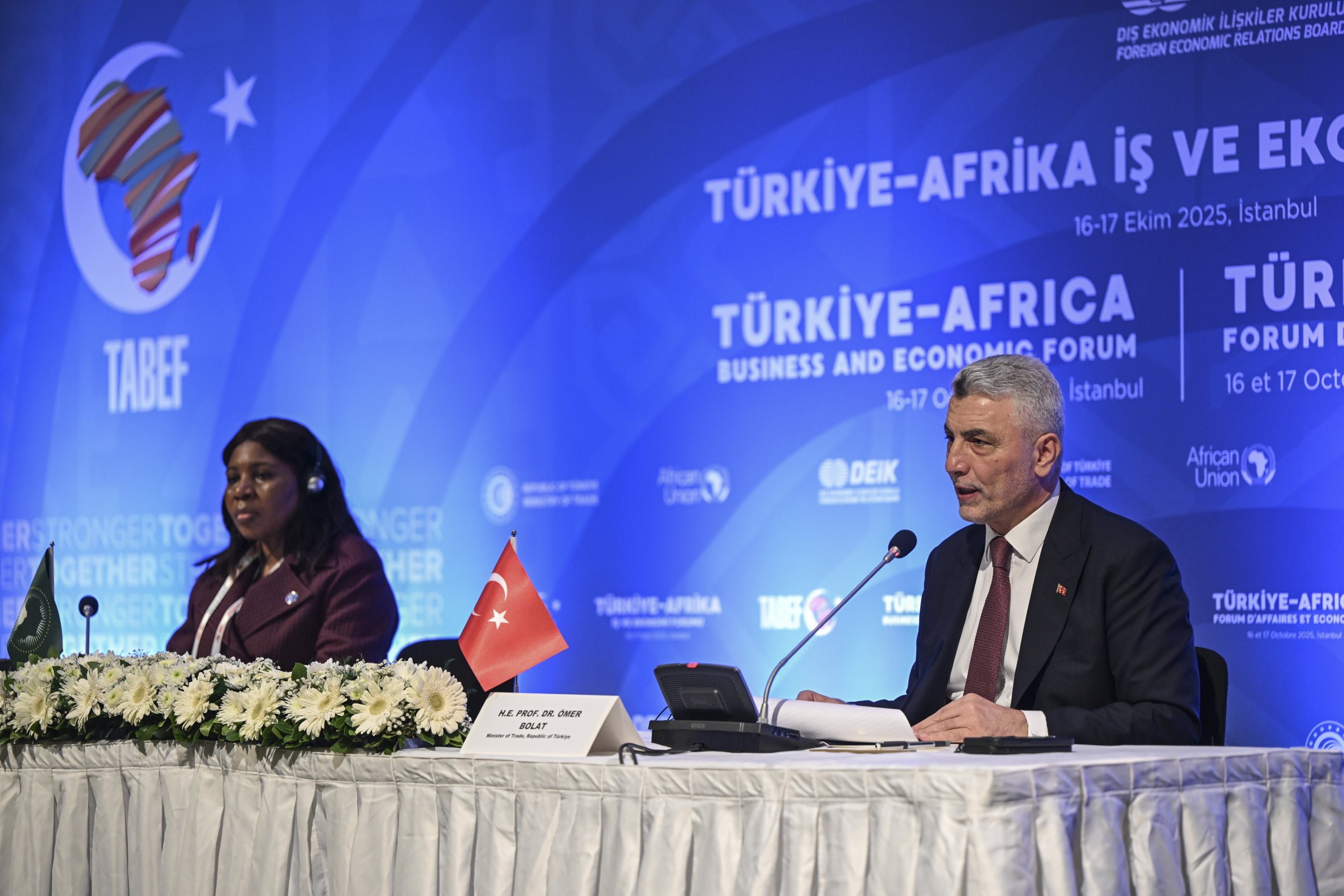Ankara Builds South–South Links To Stabilise Flows
Turkey targets $40 billion Africa trade in 2025 as GDP grows 3.5% and inflation steadies near 34.9%; stable USDTRY=X and firm oil prices (CL=F) will determine whether Ankara’s South–South export drive delivers a sustained external-balance improvement.

Turkey’s push at the Türkiye–Africa Economic and Business Forum formalises a shift from diplomatic outreach to an external-balance strategy built on South–South trade and project finance. On a calendar-year basis, Turkey’s total trade with Africa reached about $37 billion in 2024, up from roughly $5.4 billion in 2003, with authorities targeting $40 billion in 2025 and a medium-term objective of $50 billion.
The macro backdrop is tight but stabilising: the IMF’s October 2025 projections place real GDP growth at 3.5% in 2025 after an estimated 3.1% in 2024, while annual CPI was 33.3% in September 2025 and the program forecast for 2025 averages near 34.9%. With the current account still exposed to energy imports and domestic demand, Ankara is using export credits, contractor income, and logistics capacity to lift foreign-currency receipts, easing pressure on the lira and funding costs.
The mechanism operates through trade composition and financing structure. Turkish exporters are expanding shipments of machinery, construction materials, consumer durables, and processed metals into African markets, while imports from Africa remain concentrated in hydrocarbons, metals, and agricultural commodities that complement Turkey’s industrial base. Export-credit guarantees, buyer’s credits, and co-financing with African sovereign and private sponsors lower project hurdle rates and bring forward investment decisions that would otherwise stall in higher-rate conditions. As contractor awards convert into offshore services revenue, hard-currency inflows improve Turkey’s current-account arithmetic at the margin, supporting a more stable USDTRY=X profile even as disinflation proceeds gradually. In parallel, partner countries secure mid-cost infrastructure delivery while diversifying away from single-source financing.
The macro and sector impact is two-sided. For Turkey, higher Africa-linked goods and services exports help absorb softer demand in Europe and reduce the volatility of quarterly external financing needs. The scale effect is material: if Africa-directed exports grow 8–10% year on year through 2026, shipments would pass $25 billion, adding a steady foreign-currency cushion alongside tourism and remittances. For African economies, Turkish participation introduces price competition in construction and logistics, shortens lead times via standardised progress payments, and raises local procurement shares where rules are enforced. The result is a more efficient capex-to-GDP profile—projects delivered at lower unit cost with fewer arrears—supporting near-term employment in construction, transport, and building-materials supply chains while building tradables capacity in agribusiness and mining services.
Markets price the strategy through currency, credit, and equity risk channels. The lira’s level near the low-40s per dollar in October 2025 embeds a risk premium that narrows only when non-European export receipts and contractor cash flows are durable. A firmer pipeline reduces rollover risk for Turkish sovereign and corporate borrowers by smoothing foreign-currency earnings, while EM equity proxies such as EEM tend to stabilise when trade diversification lowers exposure to a single demand center. On the African side, credible execution under export-credit cover can compress sovereign spreads by reducing payment delays and currency-mismatch risk in project pipelines, especially where Eurobond issuance remains selective and multilateral disbursements are staged.
Risks are identifiable and must be managed within project structures. Exchange-rate volatility remains elevated; unhedged local-currency revenues in partner countries can erode Turkish contractor margins if USDTRY=X weakens. Debt-carrying capacity in some African sovereigns is constrained; non-concessional borrowing for mid-tier projects must be kept within fiscal anchors and tied to transparent procurement and local-content thresholds. Execution risks—customs bottlenecks, regulatory misalignment, and site-security interruptions—can raise cost overruns and arrears. Global conditions matter: oil price swings (CL=F), EM risk appetite, and G3 rate paths will influence financing costs and the pace of award conversions.
The signal from Istanbul is policy intent with measurable tests. By end-2026, Turkey’s exports to Africa should exceed $25 billion on a 12-month rolling basis; Turkish FDI stock across the continent should reach at least $15 billion with signed contractor awards in 20 or more countries; and average payment arrears on Turkey-linked projects should fall below 5% of certified invoices on a rolling four-quarter basis. For partner countries, the competitive-tender share on Turkish-associated public projects should sustain above 60%, with local procurement ratios rising and capex completion rates improving year on year.
If these thresholds hold while CPI declines toward the mid-30% program path and USDTRY=X remains broadly stable, Turkey’s Africa platform will function as a structural external-sector buffer rather than a cyclical trade detour, anchoring a modest but persistent compression in funding premia through 2026.





